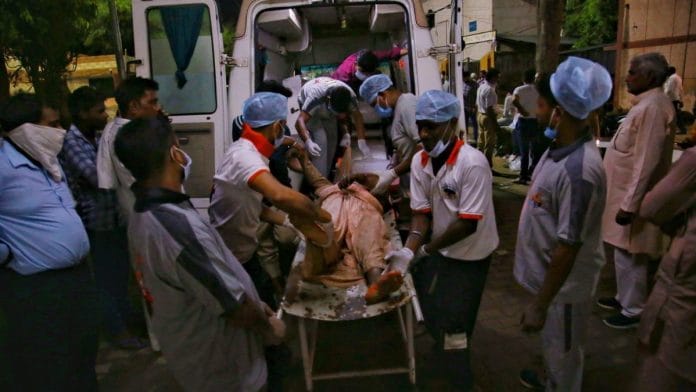The Hathras satsang on 2 July 2024 unfolded like a dark tempest. The lives of men, women, and children alike were extinguished in a heartbeat. As per the latest count, 121 devotees suffocated to death and many more were injured in what will be remembered as one of the worst tragic incidents in India in recent years. The Uttar Pradesh Police has lodged an FIR against the organisers for hiding evidence, poorly managing traffic, and permitting over two lakh people to enter where only 80,000 could be accommodated.
This wasn’t the first incident of its kind in India. The country saw a deadly stampede at Maharashtra’s Mandhardevi temple in 2005, which claimed over 340 lives, and another at Rajasthan’s Chamunda Devi temple in 2008, resulting in 250 deaths.
Large congregations of people require detailed crowd control management, which should not be left to ill-trained organisers. Learning from past incidents is crucial to preventing such disasters in the future. Various types of congregations require purpose-specific approaches for successful management.
Here are some dos and don’ts of organising large congregations — and preventing tragedies like the Hathras stampede.
Also read: Six years ago I saw what happened at Bhole Baba’s ‘satsang’ venue. It was chaos
What must be looked into
The first consideration is the choice of venue. Separate entry and exit points for the general crowd and the star speaker that prevent pressure build-up are crucial. Other factors such as capacity, accessibility, and safety should also be taken into account. In the Hathras case, the GT Road, which adjoins the venue, catered to all. It also served as a parking lot for a large number of ferry vehicles. But the dispersal of the crowd when the event concluded, unlike the ingress that is usually staggered, was chaotic, disorderly, and left little scope for control. Managing ingress and egress with the help of a well-designed layout of the venue can minimise the risk of stampedes. The venue of the satsang, from what it appears, was ill-suited for the event and mismanagement was built-in. The baba’s satsang attendance is known to be under-invoiced, and many more attend the event than what is conveyed to the authorities.
Dividing the venue into smaller segments can help contain the crowd if something goes wrong in one area. Law and order machinery is then able to manage a smaller group better, rather than handling a mammoth crowd at one time. Separate teams of officers can be made responsible foreach segment. Such barricading also helps in preventing the surge of people toward the front to meet the star speaker, which reduces the possibility of stampedes. The area surrounding the venue should be level and not offer any hindrance to smooth and easy egress. GT Road had slopes on either side.
Second, using a public address system to control the crowd through regular announcements helps guide attendees toward the exit and thus eliminates undesired movement. An efficient communication system working in tandem with the law and order machinery is necessary for good coordination among the officials managing different areas of the venue.
Third, permissions for conducting congregations should be granted only after organisers agree to all the conditions regarding security and crowd control bandobust. Since the satsang, although organised all over India under varying names, is a private function, the bulk of the physical infrastructure is provided by the organisers. A checklist containing important arrangements such as parking, provision of drinking water, and number of volunteers required to assist the police should be handed over to the organiser.
Fourth, there should be proper medical assistance and emergency provisions available at all times. The contingency medical care arrangements seem to be either non-existent or grossly insufficient in the Hathras case. An adequate number of fire tenders should also be made available, as tents erected to provide shade to the devotees may catch fire.
Finally, government officials should play a greater role in the management of such large gatherings. If the district administration’s estimate of over 2.5 lakh devotees attending the satsang is correct, then top district officials were expected to be physically present to manage the assembly, besides being involved right at the planning stage. Senior officials, besides bringing in seriousness in planning, should look into all aspects of the bandobust. Planning for the various contingencies may also be looked into.
Stampedes of the past provide valuable lessons. Failures ofbandobusts should be discussed in in-service training programmes and not take large congregations as a routine event. Even case studies of successful crowd management during such events may also be taken up in training programmes.
SN Shrivastava is former Delhi Police Commissioner. Views are personal.
(Edited by Humra Laeeq)






